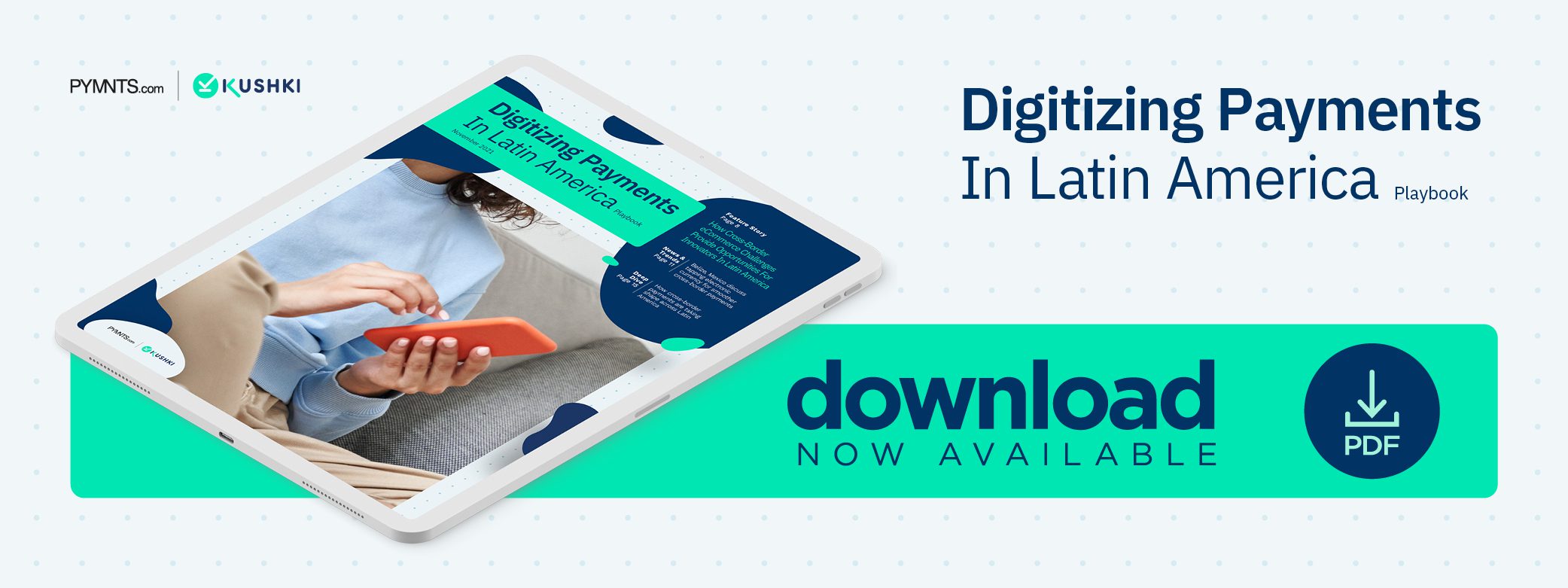How Cross-Border eCommerce Challenges Provide Opportunities for Innovators in Latin America

Kludgey domestic payments infrastructure keeps merchants from giving consumers living in Latin America the chance to shop across borders in a seamless, secure way. In the Digitizing Payments In Latin America Playbook, Northwestern Mutual’s Souheil Badran explains how FinTechs and PSPs can fix that issue by modernizing local payments and processing.
Latin America still has a relatively fragmented payments landscape. Nearly half the region’s consumers are unbanked, and 20% to 30% of eCommerce transactions rely on cash payments, in which money changes hands at physical locations.
Infrastructure improvements in several countries are expected to help grow electronic payment revenues 8.3% annually through 2025, but real-time payments systems lack cross-border interoperability, and no regional regulatory standards exist to help guide development.
As a result, cross-border eCommerce in Latin America faces significant hurdles that impair payment speeds and complicate global merchants’ ability to reach local consumers. Each country in the region has a different local payments ecosystem, and this gives domestic payment methods a permanent edge, according to Souheil Badran, executive vice president and chief operating officer at Northwestern Mutual.
“To truly access 100% of LatAm shoppers, merchants must integrate with local acquirers in each country,” he told PYMNTS in an interview.
The investment and challenges involved in this process can make rolling out a local strategy expensive and impractical, however. International merchants currently respond to these barriers to eCommerce by picking and choosing, Badran explained. They go local in only a few key markets in the region, accepting the added cost of cross-border fees in the others. This is where innovators could make breakthroughs.
“This is a great opportunity for technology companies to innovate and continue to break the barriers by enabling merchants to access local [financial institutions (FIs)] without a heavy investment,” he said.
Integration Challenges Present Innovation Opportunities
The complexities of navigating the Latin American payments landscape serve as roadblocks for cross-border merchants attempting to reach customers across the region. They also present opportunities, however, for players at every level of the payments ecosystem to reimagine their business processes and embrace technological solutions.
Heightened consumer demand and advancements in technology have spurred the need for merchants, banks and other providers to move faster, Badran said. Some local card networks and FIs that want to preserve their cross-border business still resist change, however.
“To address the changes [in consumer demand], payment service providers (PSPs) that enable local payments without a [local merchant] presence are becoming the forefront of commerce,” he said. “While cross-border has traditionally been the moneymaker, going local has [been implemented more] to ensure that merchants can capture local consumers.”
To keep pace, banks and card networks will need to revise their cross-border transactions approach to create higher eCommerce volume, Badran said.
“Banks need to continue embracing the local model by cooperating with PSPs, and card networks should revisit their rules about local processing and partner with merchants investing in this model to become top-of-wallet among their customers,” he said.
PSPs also have a continuing role to play in expanding eCommerce access, which will bring incremental revenue to the region, he said.
Smartphones May Offer an eCommerce Bridge
As Latin American consumers and merchants grow comfortable with online shopping and payments, mobile wallets could play a significant role in the transition away from cash. Forty-six percent of Latin American consumers remain either unbanked or underbanked. Even in Chile, the most-banked country in Latin America, 27% of the population lacks a bank account. The region’s smartphone penetration is one of the highest in the world, however.
Even many Latin American consumers who have bank accounts do not have traditional credit cards or make much use of financial services through their banks, Badran said. This has made solutions such as mobile wallets popular ways for those shoppers to conduct business electronically.
“Mobile wallets continue to gain popularity in LatAm,” he said. “Similar to how mobile wallets like Alipay grew in China, there was a need to address the subset of the population that did not have access to a bank account. This adoption will help increase access to financial services for the unbanked while continuing the growth in eCommerce sales.”
Badran said merchants and other ecosystem players will need to continue to focus on re-envisioning how they approach cross-border eCommerce if they want to remain competitive.
“Merchants have a big upside in the region as they continue to leverage technology companies and start seeing the transition in consumer behavior from cash to mobile wallets,” he said. “The strong adoption of mobile wallets will drive growth in the region and additional competition.”
Badran predicted that Latin America will see continued expansion from regional players and that FinTechs will find ways to innovate solutions for consumers and merchants. Additionally, merchants will continue to partner with FIs and processors, gaining access to consumers and powering growth and success.

